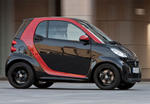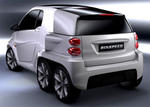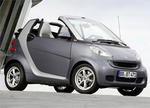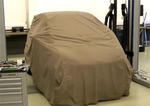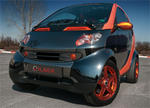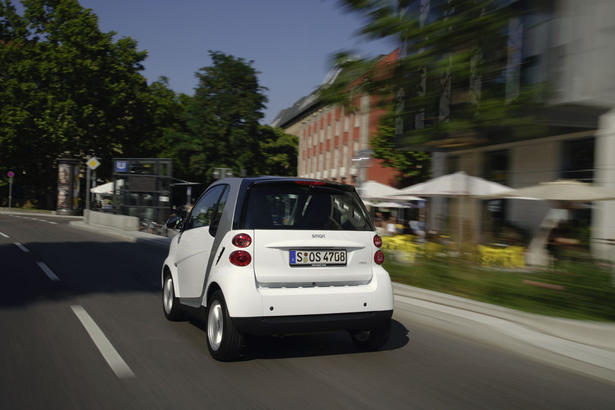
UPDATE: new photos
Smart Press Release:
From a particularly economical 52 kW variant of the smart fortwo with a start/stop function will roll off the production line in Hambach: the smart fortwo micro hybrid drive. From the end of the year it will be available as a coupé and a cabrio in all three lines – pure, pulse and passion. In addition, a limited special series that will offer an attractive price saving is planned to mark the market launch. The micro-hybrid variant will be available as a left-hand-drive ECE version in and all other markets.
The smart fortwo micro hybrid drive uses idling phases to switch off the engine and temporarily completely avoid fuel consumption, exhaust gas
and noise emissions. In combination with the automated manual transmission already fitted in the production vehicle, customers can comfortably use this function with maximum start/stop availability. Studies have shown that in everyday traffic vehicles come to a stop every 1.3 kilometres on average.
Powerful belt-driven starter generator
At the heart of the system is a special belt-driven starter generator that supplies the vehicle's
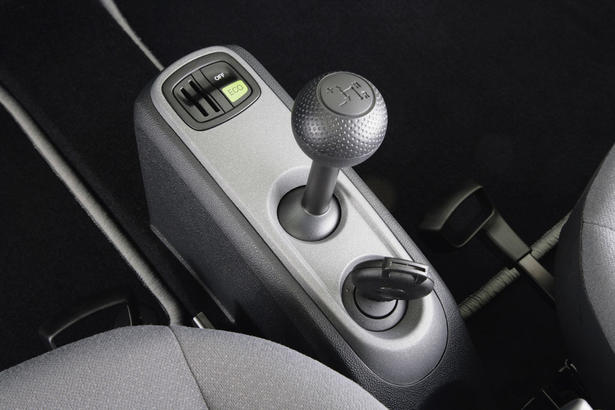
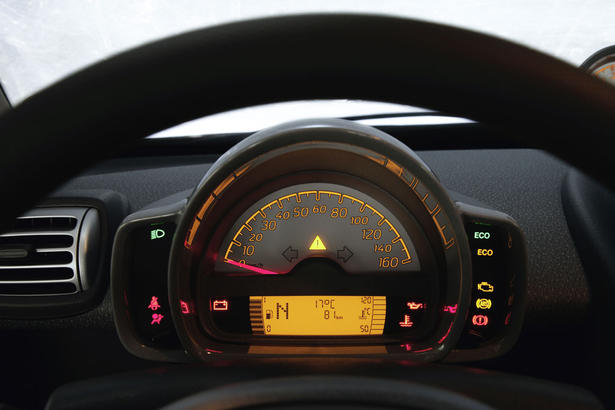
electrical system with voltage and has a secondary function as a starter. It is able to smoothly start up the combustion engine in a fraction of a second as soon as the driver releases the brake pedal. This dispenses with the need for a conventional starter motor that works on the flywheel of the crank assembly. In conjunction with slightly modified gear ratios, this strategy leads to a fuel saving of approximately 8 percent in the New European Driving Cycle (NEDC). The standard consumption is reduced by approximately 0.4 litres per 100 kilometres – from 4.7 litres to around 4.3 litres. Depending on the traffic situation
(heavy slow traffic), this can lead to a fuel saving of approximately 13 percent. There is also a corresponding reduction in CO2 emissions from 112 grams to approx. 103 grams per kilometre.
The system was developed by smart in cooperation with Valeo GmbH and the Gates Corporation. The mechanical assembly comprises the starter generator STARS 137 from Valeo. This generator delivers torque of 42 metres or current of maximum 120 ampere at 14 volts – enough to guarantee a reliable engine start, even at a temperature of minus 25 degrees Celsius. To ensure a low-slip and durable
connection of the crank assembly and the starter generator, both components were given wider belt pulleys, as was the water pump that is also driven. A six-rib poly-V-belt from Gates transmits the power.
Belt tension is particularly important because of the changing loads in start/stop operation. A coaxial spring-and-shock absorber unit that is hinged to the starter generator is supported by the engine block. The starter generator is pivoted so that it can apply the tension force to the belt drive. This ensures that both the belt section pulled by the combustion engine when it is running and the complementary belt section pulled by the starter during the start are able to reliably transmit the torque needed.
Control unit with integrated power electronics
The activities of the system are controlled by a separate control unit with integrated power electronics that is installed behind the battery recess. This communicates with the vehicle's other control units via CAN databus. A three-phase cable transmits the generator power of up to 120 ampere. The power electronics regulate the power of both the starter and the generator. An AGM battery stores the energy for the on-board electrics. The electrolyte is bound in an absorbent glass matt. Its physical properties make it more resistant to varying loaded and unloaded conditions (more cycle resistant) than conventional lead-acid batteries with sulphuric acid electrolyte.
The power electronics of the belt-driven starter generator switch off the combustion engine in idling phases, for example at traffic lights, level crossings or in stop-and-go traffic. In view of fuel economy and comfort, the electronics switch off the engine at a speed of below 8 km/h when the driver presses the brake pedal, signalising that he or she wants to stop. The engine starts as soon as the driver releases the brake pedal again. This guarantees an immediate response. The start/stop function can be deactivated if required with a switch on the centre console – until the next starting procedure (ignition off/ignition on).
The most important technical data on the new smart fortwo micro hybrid drive at a glance:
- Cylinders/valves R3/4 valves per cylinder
- Engine capacity 999 cc
- Bore/stroke 72 x 81.8 mm
- Rated output 52 kW/71 bhp at 5,800 rpm
- Max. torque 92 Nm at 4,500 rpm
- 0-100 km/h 13.3 s
- Maximum speed 145 km/h
- Fuel consumption* 4.3 l/100 km (provisional figure) Fuel saving On average approx. 8 %,
approx. 13 % in city traffic (provisional figures)
- CO2 emissions 103 g/km (provisional figure)






